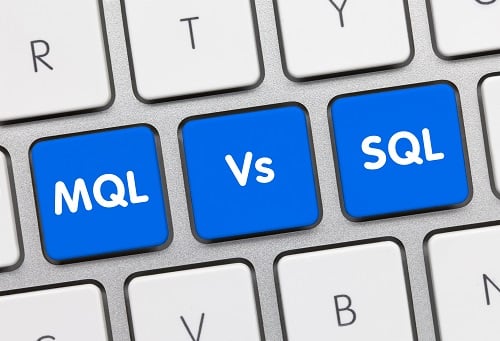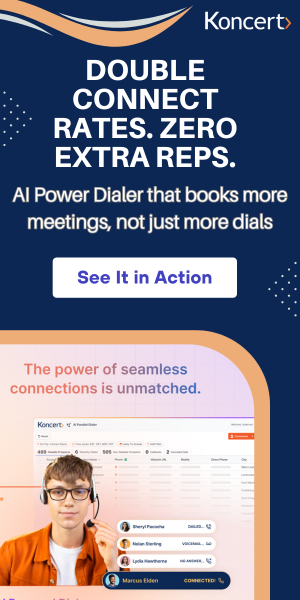
In a perfect situation, all of your marketing qualified leads (MQLs) would seamlessly transition to sales qualified leads (SQLs). However, you're not likely to enjoy that kind of success without methods to qualify, score, and disqualify leads that will satisfy both marketers and salespeople. Your sales and marketing team should work together to develop a lead gathering and sales strategy. Let’s get started by looking at MQL vs SQL and how to categorize your leads the right way.
How to Define an MQL
Marketers define an MQL as a B2B sales lead they believe has a high probability of turning into a customer. Closed-loop analytics can offer you a tool to understand your current customers and their path to becoming a customer. You should be able to see how they interacted with your business until they made a purchase. You can use your current customers' behavior and meaningful customer data to help gauge the value of new prospects.
Learn the top terms in B2B sales. Read this blog.
These two resources will also help you with lead scoring:
- Buyer personas: Buyer personas are profiles of ideal customers (otherwise known as ideal customer profiles — ICPs), based upon the information that you have from current customers or marketing data. Some information you may use could include age, income, gender, job position, and so on. For instance, your ideal customer may be a buyer for a large electronics company, make $100,000 a year, and has worked at their position for three years.
- Lead scoring:You may also assign a value to every lead that you have, based on the information they've shared with you, as well as the ways they've interacted with your business or website. For instance, a prospect who closely matches one of your buyer personas; clicked on one of your cold emails and downloladed an eBook; or who added items to a shopping cart but did not buy might get relatively high lead scores.
How to Define an SQL
An MQL should ideally turn into an SQL after the prospect has moved further along in the B2B sales process. Sales may qualify the lead after they have made contact with the prospect via email, phone, or another method. Sales departments can make this process more efficient by using a sales dialer or human agent-assisted dialer until they can get the prospect to pick up the phone or return a call. Direct email correspondence, or employing call and email sequencing, is another way to help drive prospect response and verify a lead. Once salespeople can verify the lead, they can mark it as an SQL.
About Lead Scrubbing
Naturally, an SQL has a higher value than an MQL because it has been qualified both by marketing and by sales. However, you should expect only a portion of MQLs to transform into SQLs. In turn, sales should share data about the leads they have disqualified through lead scrubbing in order to further refine marketing's lead scoring. No matter how efficient of a sales process your company has, some leads will be disqualified.
Lead scrubbing refers to the process of disqualifying leads because they have invalid information or they do not match your company’s buyer personas. Proper alignment between marketing and sales departments can help reduce wasted efforts by minimizing disqualified sales leads. Figuring out the balance between eliminating extra work with stricter lead scoring and trying not to overlook valid leads can take time, testing, and good channels of communication between marketing and sales teams.
Transitioning From an MQL to an SQL
Smooth transitions from an MQL to an SQL depend upon how well sales teams and marketing teams share data. For instance, marketers can benefit from sales reports by learning to attribute effective leads to their sources, refining buyer personas, and even figuring out which products or services sell the most.
Typically, sales teams will find leads with invalid information or prospects who are just not ready to buy. The more marketing learns about end customers, the better they can help scrub leads before salespeople have to spend time contacting the wrong prospects.
In any case, the more marketing and sales work together to align their goals and share information, the more productive lead generation will become.
Get Better at Qualifying Leads
Marketing and sales teams become better at qualifying leads and determining an MQL vs SQL more easily after diving into the scrubbing process. You might not get it right on the first try. Ensure you are continuously reviewing and optimizing your workflow for the best results.
Reach out to us here at ConnectLeader today to learn more about our entire suite of sales engagement software, including lead intelligence; multi-channel sales cadence; and our sales phone dialers, including our human agent-assisted dialer, Team Dialer. Simply click here or give us a call at 800-955-5040.
Related Posts
10 min read
High-Quality Outreach - Why Koncert's ZigZag Dialing® Replaces Call Blasting
Dec 12, 2025 by Koncert Marketing
13 min read
7 Outbound Sales Trends for 2026 - AI, Latency, & Max Connect
Dec 4, 2025 by Koncert Marketing



